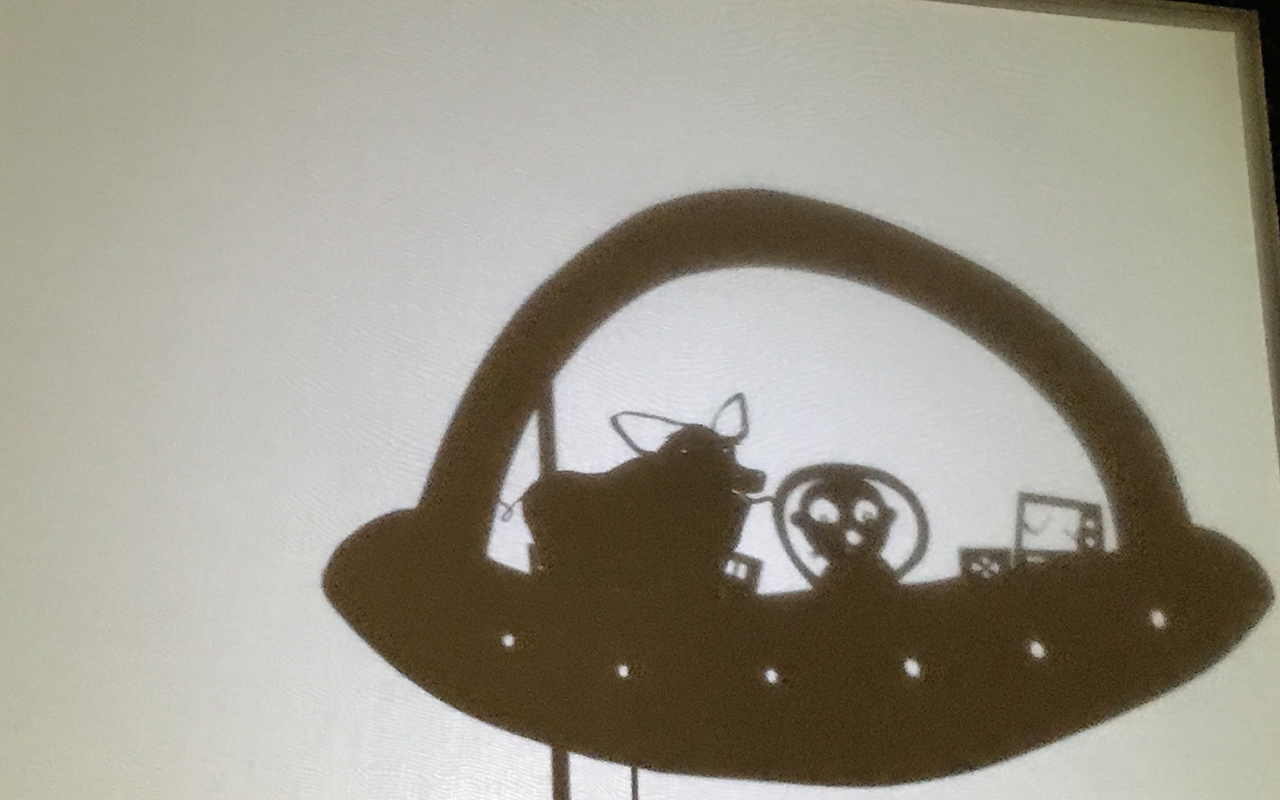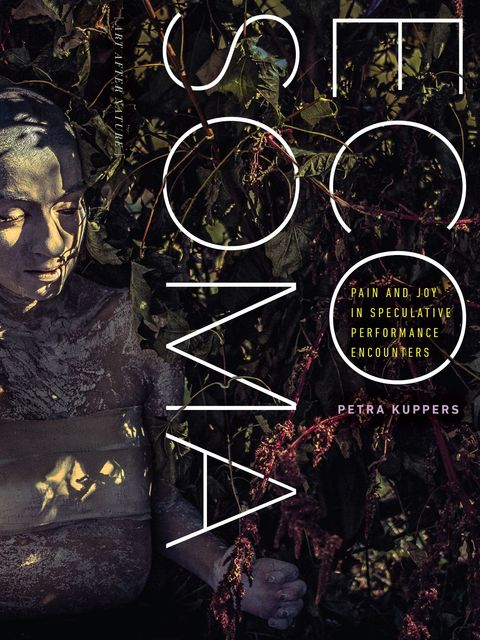Eco Soma
Pain and Joy in Speculative Performance Encounters
In Eco Soma, Petra Kuppers asks readers to be alert to their own embodied responses to art practice and to pay attention to themselves as active participants in a shared sociocultural world. Reading contemporary performance encounters and artful engagements, this book models a disability culture sensitivity to living in a shared world, oriented toward more socially just futures.
Eco soma methods mix and merge realities on the edges of lived experience and site-specific performance. Kuppers invites us to become moths, sprout gills, listen to our heart’s drum, and take starships into crip time. And fantasy is central to these engagements: feeling/sensing monsters, catastrophes, golden lines, heartbeats, injured sharks, dotted salamanders, kissing mammoths, and more. Kuppers illuminates ecopoetic disability culture perspectives, contending that disabled people and their co-conspirators make art to live in a changing world, in contact with feminist, queer, trans, racialized, and Indigenous art projects. By offering new ways to think, frame, and feel “environments,” Kuppers focuses on art-based methods of envisioning change and argues that disability can offer imaginative ways toward living well and with agency in change, unrest, and challenge.
Traditional somatics teach us how to fine-tune our introspective senses and to open up the world of our own bodies, while eco soma methods extend that attention toward the creative possibilities of the reach between self, others, and the land. Eco Soma proposes an art/life method of sensory tuning to the inside and the outside simultaneously, a method that allows for a wider opening toward ethical cohabitation with human and more-than-human others.

Table of Contents
Metadata
- rightsThis book is freely available in an open access edition thanks to TOME (Toward an Open Monograph Ecosystem)—a collaboration of the Association of American Universities, the Association of University Presses, and the Association of Research Libraries—and the generous support of the University of Michigan’s College of Literature, Science, and the Arts and the Provost Office. Learn more at the TOME website, available at: openmonographs.org.
Excerpts from Margaret Noodin, “Gimanaajitoomin Nibi/We Honor Water,” What the Chickadee Knows: Poems in Anishinaabemowin and English (Detroit: Wayne State University Press, 2020), reprinted by permission of the poet.
Excerpts from Sueyeun Juliette Lee, Solar Maximum (New York: Futurepoem Books, 2015), reprinted by permission of the poet.
Portions of chapter 1 were previously published in a different form in “Social Somatics and Community Performance: Touching Presence in Public,” in Oxford Handbook for Dance and Theater, ed. Nadine George-Graves, 507–22 (New York: Oxford University Press, 2015); in “Occupy the WEFT: Choreographing Factory Affect and Community Performance,” Contemporary Theatre Review 25, no. 3 (2015): 401–16, copyright Taylor and Francis, available online: http://www.tandfonline.com/; and in “Somatic Politics: Community Dance and Aging Dance,” in The Aging Body in Dance: A Cross-Cultural Perspective, ed. Nanako Nakajima and Gabriele Brandstetter, 107–21 (London: Taylor and Francis, 2017), copyright Petra Kuppers. Portions of chapter 2 were previously published in a different form in “Edges of Water and Land: Transnational Performance Practices in Indigenous/Settler Collaboration,” Journal for Arts and Communities 6, no. 1 (2015): 5–28. A portion of chapter 2 was previously published in Petra Kuppers and Margaret Noodin, “Minobimaadiziwinke (Creating a Good Life): Native Bodies Healing,” The Arts of Indigenous Health and Wellbeing, ed. Nancy Van Styvendale, J. D. Mcdougall, Robert Henry, and Robert Alexander Innes (University of Manitoba Press, forthcoming). Portions of chapter 3 were previously published in a different form in “Swimming with the Salamander: A Community Eco-Performance Project,” Performing Ethos 5, no. 1/2 (2015): 119–35; and in “Writing with the Salamander: An Ecopoetic Community Performance Project,” in Ecopoetics: Essays in the Field, ed. Angela Hume and Gillian Osborne, 118–41 (Iowa City: University of Iowa Press, 2018). Portions of chapter 4 were previously published in a different form in “Toward Disabled Futures: Non-Realist Embodiment and Puppets,” Journal of Applied Arts and Health 11, no. 1+2 (2020): 59–72; and in “Disabled Dance Sensoria: Openings into Otherness,” Tanzplattform Deutschland, Arbeitsbuch, Über die Präsenz von Körpern jenseits des Mainstreams im zeitgenössischen Tanz (2018).
Book cover description: A dancer, Yulia Arakelyan from Wobbly Dance, covered in white clay and with a bound chest, emerges from rich vegetation, lips parted, sun-dappled, a hand open toward a purple frond. The plants twine in and out of the book title. Cover design by Frances Baca Design. Cover photograph by Kamala Dolphin-Kingsley.
Copyright 2022 by Petra Kuppers
- isbn978-1-4529-6815-5
- publisherUniversity of Minnesota Press
- publisher placeMinneapolis, MN
- restrictionsEco Soma: Pain and Joy in Speculative Performance Encounters is licensed under a Creative Commons Attribution-NonCommercial-NoDerivatives 4.0 International License (CC BY-NC-ND 4.0).
- rights holderPetra Kuppers
- series title
- doi


